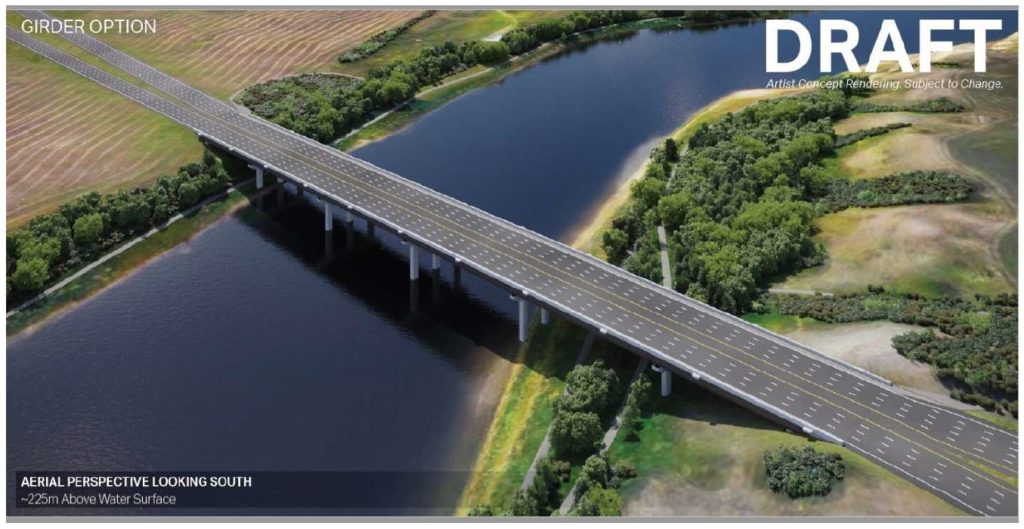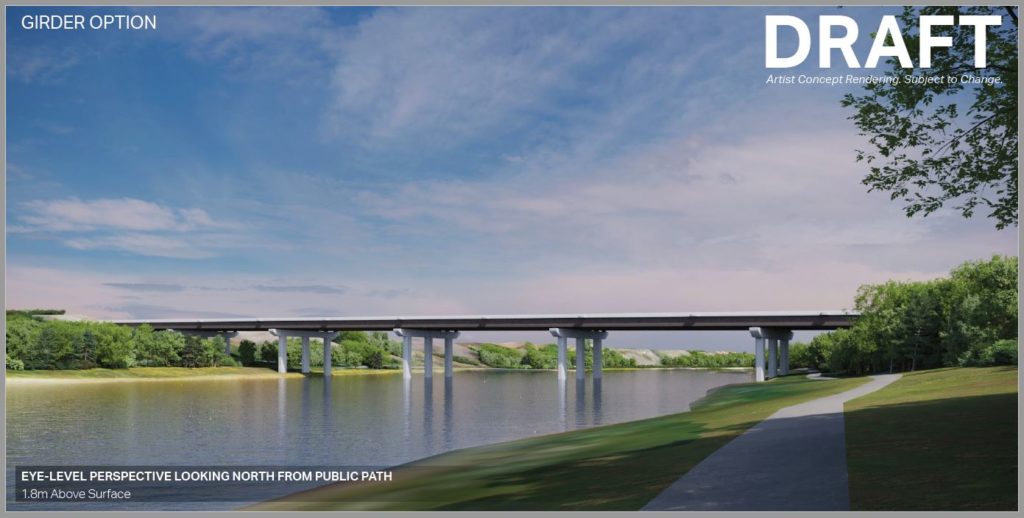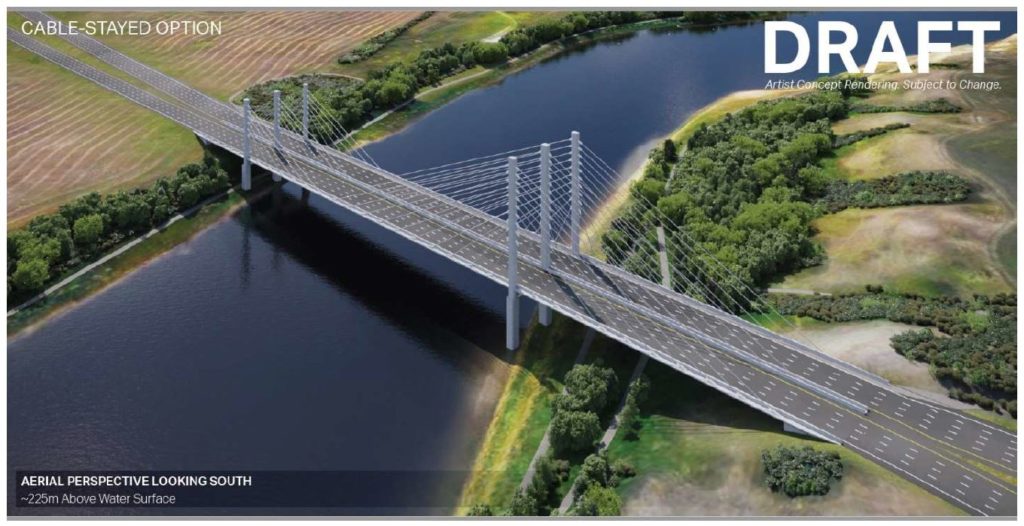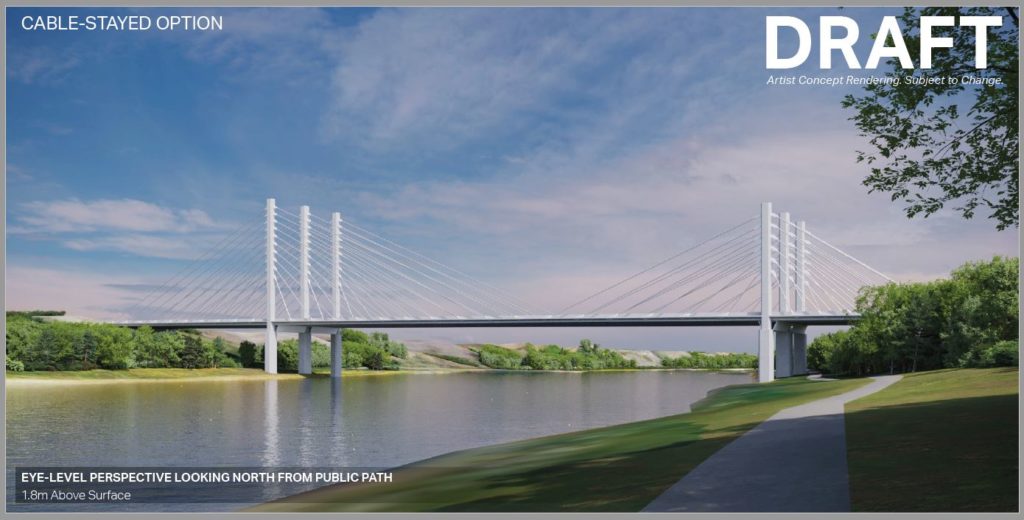A team of professional engineers and roadway designers considered 15 possible bridge types that could potentially be used where the Saskatoon Freeway crosses the South Saskatchewan River.
The initial list of 15 bridge options was short-listed to four bridge designs using the following evaluation criteria:
- Slope stability
- Environmental considerations
- Future expandability
- Compatibility with other bridges in the area
- Feasibility to build
- Construction and maintenance costs; and
- Aesthetics
A summary of this first level of evaluation can be found at the bottom of this page.
Next, the design team rated each of the four shortlisted bridge types using a more detailed process known as a multiple account evaluation (MAE); this included elements such as:
- Heritage considerations;
- Environmental Impact (Number of piers required in the South Saskatchewan River, etc.);
- Overall impact of bridge construction on the river during construction, as well as for ongoing operation and maintenance;
- Geotechnical risks related to both riverbank slope stability and bridge foundations;
- Alignment with existing development plans;
- Aesthetics;
- Impact on Wanuskewin Heritage Park, adjacent First Nations, and municipalities;
- Economic development impacts resulting from the use of locally made material in construction; and
- Life cycle costs.
After this second round of evaluations, two bridge options emerged as offering the best options and value for the Saskatoon Freeway:
- A steel composite steel plate girder bridge option, which is common throughout Canada; and
- An unsymmetrical cable stayed bridge option, which scored highest in the evaluation.
While initial construction costs are greater with a cable-stayed bridge compared to the girder bridge option, the cable stayed bridge can be constructed one year sooner. It also has fewer environmental impacts as it requires minimal work in the river, has less impact on the River Valley as it spans across most of both slopes which is reflected in the MAE scoring points and has smaller structural steel components that may allow the steel to be sourced and fabricated in Saskatchewan. The total life cycle cost of the cable-stayed bridge option is almost identical to the girder bridge option, based on the design work completed to date. Although the steel plate girder was ranked lowest in the evaluation, the steel plate girder bridge was advanced for further analysis due to it being the typical bridge configuration used by the Ministry, and therefore the design and construction of a plate girder bridge is well known and less complex.
Both bridge concepts offer the same potential to accommodate the addition of more traffic lanes when required, as well as multiuse paths for cyclists and pedestrians.
Artist renderings of each bridge option are provided below:




Further details of the MAE can be found at the bottom of this page.
Tell us what you think
As previously communicated, this portion of the public comment period has been closed. We will be seeking further input on the bridge concepts later on in the Functional Planning Study.
First level of evaluation of bridge options
20200820-659183_Initial_Eval_Table_For_Bridge_BlogMultiple Account Evaluation (MAE) for bridge options
d20200820-659183_MAE_Table_For_Bridge_Blog